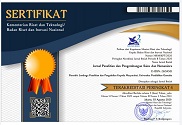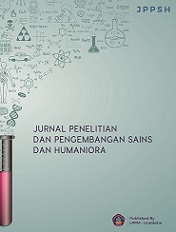Differences in Language Conversation Use by Gender
DOI:
https://doi.org/10.23887/jppsh.v6i2.43639Keywords:
Bahasa, Jenis kelamin, Percakapan, Perempuan, laki-lakiAbstract
The main thing that affects language is Gender, it can affect the choice of words used. Then the language used by women is different from the language used by men. Those state that the choices of words, vocabulary, or sentences of language conversation through gender are different. This study conducted to analyze what happened or was experienced by certain groups which focused on the differences in the use of spoken language that were studied by gender. There are no participants in this research because this research use library research which is based on the literature review to analyze the data. This research uses descriptive qualitative. Analyzing and collecting data conducted by compiling or clarifying and interpreting. Data were collected through analyzing and reviewing sources in the form of books and articles discussing the topic then analyze the data in order to draw the conclusion. The result of study found that the language differences exist because of the paradigm social then produce differences in language conversation such as vocabulary use, word choice and emotional differences.
References
Abdel-Raheem, A. (2022). Taboo metaphtonymy, gender, and impoliteness: how male and female Arab cartoonists think and draw. Social Semiotics, 1–37. https://doi.org/10.1080/10350330.2022.2113971.
Affleck, W., Glass, K. C., & Macdonald, M. E. (2013). The limitations of language: Male participants, stoicism, and the qualitative research interview. American Journal of Men’s Health, 7(2), 155–162. https://doi.org/10.1177/1557988312464038.
Agrawal, S., & Awekar, A. (2018). Deep learning for detecting cyberbullying across multiple social media platforms. In European Conference on Information Retrieval, 141–153. https://link.springer.com/chapter/10.1007/978-3-319-76941-7_11.
Akhter, I. (2014). Differences in language use by male and female students in tertiary academia in dhaka city. BRAC University.
Bamman, D., Eisenstein, J., & Schnoebelen, T. (2014). Gender identity and lexical variation in social media. Journal of Sociolinguistics, 18(2), 135–160. https://doi.org/10.1111/josl.12080.
Bayyurt, Y. (2016). Current perspectives on sociolinguistics and English language education. The Journal of Language Teaching and Learning, 3(1), 69–78. https://dergipark.org.tr/en/pub/jltl/issue/22506/240603.
Benmarrakchi, F., El Kafi, J., & Elhore, A. (2017). Communication technology for users with specific learning disabilities. Procedia Computer Science, 110, 258–265. https://doi.org/10.1016/j.procs.2017.06.093.
Bokamba, E. G. (1989). Are there syntactic constraints on code-mixing? World Englishes, 8(3), 227–292. https://doi.org/https://doi.org/10.1111/j.1467-971X.1989.tb00669.x.
Cameron, D. (2014). Gender and language ideologies. The Handbook of Language, Gender, and Sexuality, 279–296. https://doi.org/10.1002/9781118584248.ch14.
Chalkiadaki, A. (2018). A systematic literature review of 21st century skills and competencies in primary education. International Journal of Instruction, 11(3), 1–16. https://doi.org/10.12973/iji.2018.1131a.
Dong, J. (2014). Study on Gender Differences in Language Under the Sociolinguistics. Canadian Social Science, 10(3), 92–96. https://doi.org/10.3968/4602.
Gao. C. (2013). A sociolinguistic study of English taboo language. Theory and Practice in Language Studies, 3(12), 2310. http://www.academypublication.com/issues/past/tpls/vol03/12/tpls0312.pdf#page=162.
Gu, L. (2013). Language and gender: Differences and similarities. International Conference on Advances in Social Science, Humanities, and Management (ASSHM-13), 247–250. https://doi.org/10.2991/asshm-13.2013.46.
Harya, T. D. (2018). Sociolinguistics (code: code switching and code mixing). LENTERA: Jurnal Ilmiah Kependidikan, 11(1), 87–98. http://download.garuda.kemdikbud.go.id/article.php?article=1026202&val=12090&title=SOCIOLINGUISTICS CODE CODE SWITCHING AND CODE MIXING.
Hidayat, A. (2017). Variasi Bahasa Berdasarkan Jenis Kelamin Di Desa Matangaji Kecamatan Sumber Kabupaten Cirebon. Jurnal Program Studi Pendidikan Bahasa Dan Sastra Indonesia, 53(9), 1689–1699. https://doi.org/10.25134/fjpbsi.v5i2.187.
Hitchcock, M., & Dann, G. M. S. (1998). The Language of Tourism: A Sociolinguistic Perspective. In The Journal of the Royal Anthropological Institute (Vol. 4, Issue 3). Cab International. https://doi.org/10.2307/3034171.
Ishikawa, Y. (2015). Gender differences in vocabulary use in essay writing by university students. Procedia-Social and Behavioral Sciences, 192, 593–600. https://doi.org/10.1016/j.sbspro.2015.06.078.
Kerr, B. A., & Multon, K. D. (2015). The development of gender identity, gender roles, and gender relations in gifted students. Journal of Counseling & Development, 93(2), 183–191. https://doi.org/10.1002/j.1556-6676.2015.00194.x.
Kleparski, G. A., & Pikor-Niedziałek, M. (2011). Gender and Language. The American Journal of Semiotics, 27(1), 284–286. https://doi.org/10.5840/ajs2011271/415.
Levon, E. (2015). Integrating intersectionality in language, gender, and sexuality research. Language and Linguistics Compass, 9(7), 295–308. https://doi.org/10.1111/lnc3.12147.
Li, J. (2014). A sociolinguistic study of language and gender in Desperate Housewives. Theory and Practice in Language Studies, 4(1), 52. https://www.academypublication.com/issues/past/tpls/vol04/01/08.pdf.
Lutviana, R., & Mafulah, S. (2021). The use of slang words in online learning context of EFL class. EnJourMe (English Journal of Merdeka) : Culture, Language, and Teaching of English, 6(1), 55–62. https://doi.org/10.26905/enjourme.v6i1.6118.
Malekela, G. A. (2018). Tanzanian school women talking: are the traditional patterns of thinking changing? Utafiti Journal, 3(2). http://www.journals.udsm.ac.tz/index.php/uj/article/download/1235/1135.
Maltz, D. N., & Borker, R. A. (2018). A cultural approach to male-female miscommunication. In The Matrix of Language, 81–98. https://www.taylorfrancis.com/chapters/edit/10.4324/9780429496288-7/cultural-approach-male-female-miscommunication-daniel-maltz-ruth-borker.
Mantiri, O. (2015). Factors Affecting Language Change. SSRN Electronic Journal, March 2010. https://doi.org/10.2139/ssrn.2566128.
Nassaji, H. (2015). Qualitative and descriptive research: Data type versus data analysis. Language Teaching Research, 19(2), 129–132. https://doi.org/10.1177/1362168815572747.
Nurhamidah, N., Fauziati, E., & Supriyadi, S. (2018). Code-Switching in Efl Classroom: Is It Good or Bad? Journal of English Education, 3(2), 78–88. https://doi.org/10.31327/jee.v3i2.861.
Plug, I., Stommel, W., Lucassen, P. L., Dulmen, S. V., & Das, E. (2021). Do women and men use language differently in spoken face-to-face interaction? A scoping review. Review of Communication Research, 9, 43–79. https://doi.org/10.12840/ISSN.2255-4165.026.
Putri, D. E., Putri, K. H., & Putri, E. Y. (2017). Language and Gender : a Conversation Analysis in the Difference of Language Related To Gender. Proceedings of ISELT FBS Universitas Negeri Padang, 5, 21–26. http://ejournal.unp.ac.id/index.php/selt/article/view/8029.
Putri, I. G. A. V. W., & Santika, I. D. A. D. M. (2020). The Emotional Lexicon Used by Male and Female Communication: Study of Balinese Language Used in South Kuta-Bali. Linguistic, English Education and Art (LEEA) Journal, 3(2), 364–372. https://doi.org/10.31539/leea.v3i2.1177.
Rabiah, S. (2018). Language as a Tool for Communication and Cultural Reality Discloser. 1–11. https://doi.org/10.31227/osf.io/nw94m.
Sholikhah, H. A. (2015). Bahasa Pria Dan Wanita: Kajian Sosiolinguistis (3rd ed., Issue 3). Palembang Universitas PGRI.
Singh, P., Tabe, T., & Martin, T. (2022). The role of women in community resilience to climate change: A case study of an Indigenous Fijian community. In Women’s Studies International Forum, 90, 102550. https://doi.org/10.1016/j.wsif.2021.102550.
Smith, P. H., Bessette, A. J., Weinberger, A. H., Sheffer, C. E., & McKee, S. A. (2016). Sex/gender differences in smoking cessation: a review. Preventive Medicine, 92, 135–140. https://doi.org/10.1016/j.ypmed.2016.07.013.
Susandi, N. K. A., Rusanti, N. P., & Sutrisna, I. P. G. (2018). Gay Language in Bali (Sociolinguistics Study on Homosexual and Bisexual Men in Bali). In Fourth Prasasti International Seminar on Linguistics, 204–212. https://doi.org/10.2991/prasasti-18.2018.38.
Tanjung, P. A., & Ashadi, A. (2019). Differentiated instruction in accommodating individual differences of EFL students. Celtic: A Journal of Culture, English Language Teaching, Literature, & Linguistics, 6(2), 63. https://doi.org/10.22219/celticumm.vol6.no2.63-72.
Wahyuningsih, S. (2018). Men and women differences in using language: A case study of students at STAIN Kudus. EduLite: Journal of English Education, Literature and Culture, 3(1), 79–90. https://doi.org/10.30659/e.3.1.79-90.
Xia, X. (2013). Gender differences in using language. Theory & Practice in Language Studies, 3(8). https://www.academypublication.com/issues/past/tpls/vol03/08/tpls0308.pdf#page=189.
Zulkarnain, S. I., & Fitriani, N. (2018). Perbedaan Gaya Bahasa Laki-Laki Dan Perempuan Pada Penutur Bahasa Indonesia Dan Aceh. Internasional Journal of Child and Gender Studies, 4(1), 159–172. https://doi.org/10.22373/equality.v4i1.4486.
Downloads
Published
Issue
Section
License
Copyright (c) 2022 Intan melina kristy

This work is licensed under a Creative Commons Attribution-ShareAlike 4.0 International License.
Authors who publish with the Jurnal Penelitian dan Pengembangan Sains dan Humaniora agree to the following terms:
- Authors retain copyright and grant the journal the right of first publication with the work simultaneously licensed under a Creative Commons Attribution License (CC BY-SA 4.0) that allows others to share the work with an acknowledgment of the work's authorship and initial publication in this journal.
- Authors are able to enter into separate, additional contractual arrangements for the non-exclusive distribution of the journal's published version of the work (e.g., post it to an institutional repository or publish it in a book), with an acknowledgment of its initial publication in this journal.
- Authors are permitted and encouraged to post their work online (e.g., in institutional repositories or on their website) prior to and during the submission process, as it can lead to productive exchanges, as well as earlier and greater citation of published work. (See The Effect of Open Access)









